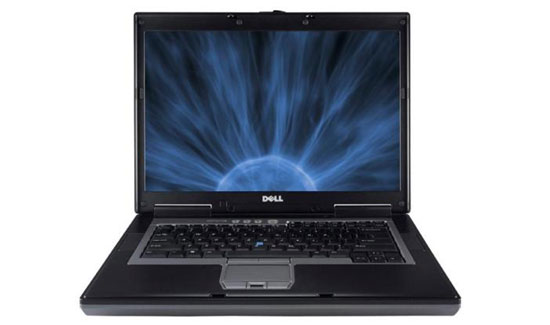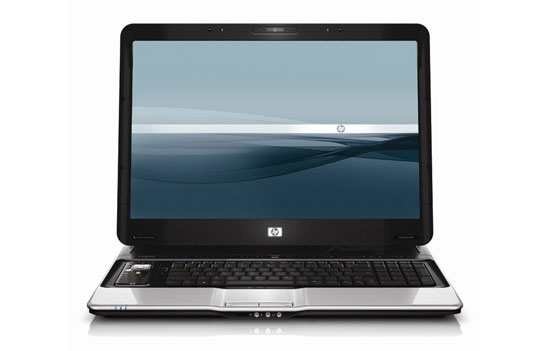Midrange Laptops
Depending on what you want out of a laptop, the midrange category is where all the options really become available. It's possible to get a 12.1" laptop for around $1000, but if you'd like to upgrade some of the areas - i.e. get a high capacity battery and an extended warranty with accident protection - and you'll definitely be closer to $1500. Getting a truly capable gaming platform also becomes possible when you spend $1500, and several brands that tend to be a bit more expensive become viable without cutting important features.
Extended battery life (i.e. five hours or more) is one feature that you might want to consider in a $1500 laptop. You can get there in one of two ways: either get a 14.1" (or larger) laptop and a 9-cell or 12-cell battery, or else pick up one of many 12.1" laptops that come with a 6-cell battery and LED backlighting. Keep in mind that integrated graphics tend to go hand in hand with longer battery life, although the lower end discrete graphics options (HD 2300 and GeForce 8400M) aren't that power hungry. Also remember that larger displays inherently consume more power because of the bigger backlights they include.

The net result is that while it's possible to get reasonable battery life out of a 15.4" or 17" notebook, you end up with something very heavy and bulky. A 12-cell 130 WHr battery can provide four hours of mobility on a 17" notebook that uses ~33W of power; you can get the same four hours of battery life with a 14.1" notebook and a 9-cell 77 WHr battery if the laptop uses ~20W, or a 12.1" laptop with a 6-cell 50 WHr battery if the laptop uses ~13W. So your choices might be a 10 pound 17", a 7 pound 14.1", or a 4 pound 12.1". Those aren't just random numbers we're putting up; all of these options exist if you look around a bit (give or take); if you're serious about mobility and battery life, it's a safe bet that toting a 12.1" laptop is a lot more attractive than lugging around a 17" brick.
While we're on the subject of 12.1" laptops, small tablet PCs also fall into the $1500~$1800 price range. Some people really like the tablet interface and others don't; we think it's more of a convenience feature rather than a required option. Regardless, there are a lot of tablet laptops to choose from: Toshiba's Portege line, the Lenovo ThinkPad X61 Tablet, HP Compaq 2710p (we'd stick with the HP tx2500z, honestly), and the AVADirect Clevo TN121R to name a few. Most ship with a 6-cell battery that should provide at least four hours of freedom from wires.

Mobile workstations are another category of laptop where prices start in the $1400 range. Let's be clear on this: no laptop out right now is going to match the performance of a top-end desktop workstation; in fact, it won't even come close, as it's relatively easy to get a quad-core 3.0GHz desktop and difficult to impossible to get a laptop up to that level. However, higher-end dual-core mobile CPUs are plenty fast these days, and the T9300 isn't all that expensive. Dell's Precision M2300 as an example with a T9300, WXGA+ LCD, 160GB 7200RPM HDD, 2GB RAM, and NVIDIA Quadro FX 360M will run about $1500 - including a 3-year warranty.
Given what we said on the previous page about graphics, we're now in a position to discuss gaming laptops. While it's certainly possible to run games on an 8600M GT/9500M GS or HD 2600, we can't stress enough how much better the experience will be with an 8800M GTS or GTX. Most of these gaming laptops will be out of reach of a midrange budget, but there's one major exception: Gateway's P-6831 FX priced at $1300. The price and performance offered by this Gateway was so much better than anything else that we couldn't help but give it our Gold Editors' Choice award. There's only one small problem: the P-6831 has been discontinued. The good news is that the replacement is the P-6860, which is the same as the P-6831 with a few minor upgrades. Memory has been increased to 4GB, the OS is now Vista Home Premium 64-bit, the CPU is the T5550 instead of the T5450, and the hard drive is a 320GB 5400 RPM model. The only trick now is actually finding one in stock, and we understand the P-6860 is scheduled to be replaced in the future by another slightly upgraded model. Alternately, grab the P-173FX from the Gateway site for $1500; it the same as the P-6860 but with a T7500 CPU and a 200GB 7200RPM drive. Battery life is a weak point, but then that's practically a give with gaming notebooks.

The upgraded Acer Aspire 6920 is another larger midrange offering, but where the Gateway we just discussed focuses on gaming, Acer clearly targets the multimedia enthusiast. The 6920 (model 6920-6422) includes a 9500M GS graphics for reasonable gaming, but the real highlight is the Blu-ray drive and 16" 1920x1080 (1080p) display. The chassis also includes integrated 5.1 audio. Pricing starts at around $1800, but it's difficult to find any other laptops in this price range that include such a full-featured multimedia experience. We'll have a full review of the 6920 in an upcoming roundup. If you like the idea of the Acer 6920 as a portable multimedia center, but you want even more, its big brother 8920 bumps the screen size up to 18.4" while maintaining all of the other features we like on the 6920.
Most of the remaining midrange options once again fall into the realm of upgraded entry-level options. Dell's XPS M1330 and M1530 both start at $999, but we really want a few upgrades. The $1500 M1330 gives us pretty much all of the upgrades we'd like (T8300, 3GB RAM, 320GB HDD, 8400M GS, LED backlighting, and a 3-year warranty), and all we need is 802.11N WiFi and a larger battery. The $1600 M1530 is similar, but with a T9300 and 4GB RAM; 8600M GT and a 1920x1200 LCD are potential upgrades to consider. Note that starting at a higher spec laptop often results in a lower price than if you were to begin with the $1000 model and select the same upgrades - a benefit of mass production. Virtually every vendor will offer similar laptops to these two, with minor differences. Apple users will point out the availability of the MacBook, but you still get stuck with integrated graphics unless you opt for the $2000 MacBook Pro.

One other interesting option is HP's HDX, with a starting price of $1600 using the current $200 instant rebate. What makes the HDX interesting? Well, to call this thing a laptop requires a serious stretch of the imagination. Forget about 17" desktop replacements; HP goes all out with a 20.1" behemoth! The extra size is put to good use, however, as you get a 1680x1050 LCD, T8100, and a GeForce 8800M GTS. The base HDX also includes 2GB RAM, Vista 64-bit, two hard drives in RAID 0 (though the base model uses 120GB drives - boo!), and a TV tuner and remote. It checks in at a hefty 15.3 pounds, and that's likely not including the power brick. Still, if you want a decent gaming rig that can easily be transported to LAN parties, and you don't want to settle for a "small" 17" display, the HDX will work nicely.










28 Comments
View All Comments
jmurbank - Friday, July 18, 2008 - link
I also agree buying a notebook should be based on quality, battery, screen or size. The so called guide is more like a price comparison than a real guide. A real guide will tell the reader to ask themselves questions what they need in the notebook or what they are going to use the notebook for in a certain environment.If the guide is realistically, budget notebooks can rise up to high-end prices after including extras. Let us see, my Dell Inspiron 1520 costs around $1700 after including some upgrades to suit my needs. After a corporate or employee discount from a relative or friend, it made it $300 cheaper which is $1400 for the final price.
I would say I got a good notebook computer compared to the problems I am experiencing because it gets 4 to 6 hours of battery life for general tasks in either Windows and GNU/Linux with the use of the 9 cell battery, and nVidia GeForce8 8400M GS that eases multiple monitor setup and decent 3D performance in games. The upgrade to Intel WiFi 3945 helps setting up WiFi in GNU/Linux easier. The choice of a brighter display instead of a wide-angle high resolution display also helps the battery usage last longer since I do not have to use the full brightness. The lowest brightness is bright enough to see the screen. The glossy display is a little annoying while being around bright sources such as at the airport or outside. It is hot even though I picked a T7300 processor and stuck with 2 GB of DDR2-667 memory (two modules of 1 GB).
I would gauge my notebook quality as 3.5, portability a 7, and size a 6.
I would not care about what matrices design that the LCD is constructed. I would care more if notebook manufactures tells us consumers the LCD screen is 6-bit or 8-bit because there is a difference in the amount of colors. One is 18-bit color while the other is 24-bit color. If you think of not seeing 16515072 colors is something not to complain about, then people have a lot to learn. Not seeing 16515072 colors is color blindness.
fabarati - Saturday, July 12, 2008 - link
Ok, beginner was a bit of an overexageration. You're at an intermediate level.dblevitan - Saturday, July 12, 2008 - link
I'm surprised the only mention of Thinkpads is the x61. The T series is probably one of the most popular laptop series created and are some of the sturdiest laptops around. Sure, they're not as flashy as many laptops but they have good performance, are reliable, and just work. And they're surprisingly inexpensive.Mafiacrime - Friday, July 11, 2008 - link
http://www.mafiacrime.org/r.php?id=5320">http://www.mafiacrime.org/r.php?id=5320Come check out Mafia Crime!!
microAmp - Friday, July 11, 2008 - link
Yay for spam!SniperWulf - Friday, July 11, 2008 - link
Or the P-6831FX for that matter?JarredWalton - Friday, July 11, 2008 - link
I suppose at 8000 words, I can't expect people to read everything. Check page 5 where I mention both (and page 3 mentions the 6831 briefly as well). I did after all give the 6831 a Gold EC award, so you can hardly expect me to forget about it. :)Gast - Friday, July 11, 2008 - link
No apple notebooks? Even if you do have to purchace Windows, I consider them a contender. Esp with their support. (Yay for 2 lightning strike iBooks replaced @ no charge).microAmp - Friday, July 11, 2008 - link
Did you skip page 6?Gast - Friday, July 11, 2008 - link
I did. And I also missed the brief mention of the MacBook in the earlier pages. Shame on me for not reading the article close enough, much less the entire article.The entire article does kinda gloss on warentee information, which is where I see Apple truely shining. *shrugs* Fair review I'd say though.